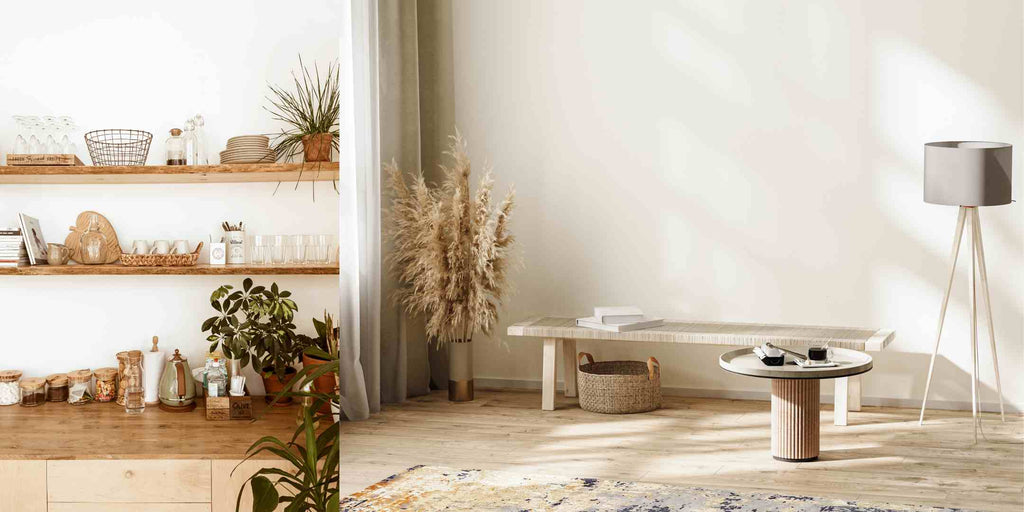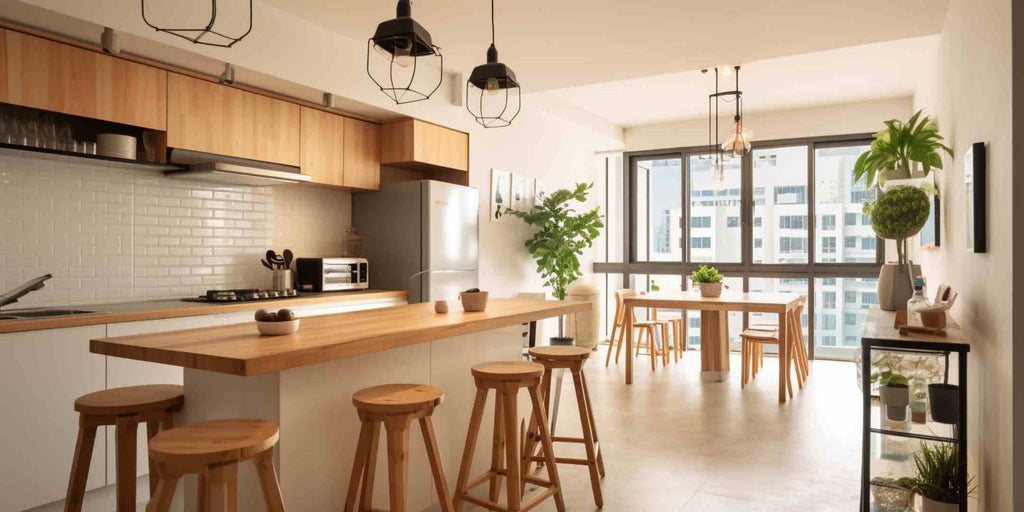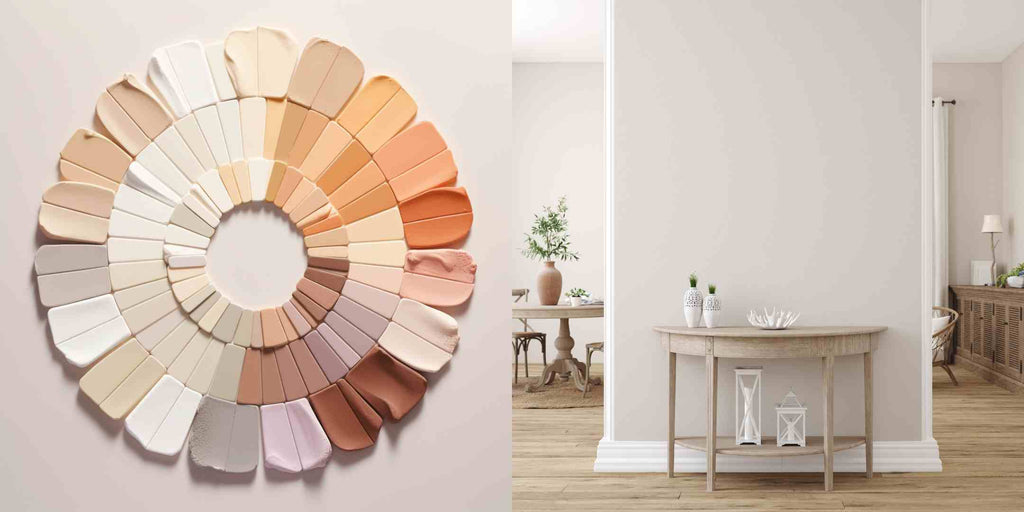As we seek to simplify our lives amid the hustles and bustles of Singapore, Scandinavian interior design has become popular for many HDB and BTO homeowners. Rooted in the Nordic countries of Northern Europe, the Scandinavian style emphasises minimalism, functionality, and natural elements.
Whether you're looking to create a cosy atmosphere in your living room or transform your entire home into a peaceful oasis, incorporating Scandinavian design principles can help you achieve your goals.
Let's explore the key elements of Scandinavian interior design and look at some tips on how to incorporate them into your home.
The Origins of Scandinavian Design

Have you ever wondered why Scandinavian interior design is all the rage nowadays? It's not just a trend, but a timeless approach to design that has captivated the world, including many HDB spaces in Singapore. One of the reasons for its enduring popularity is its ability to adapt to changing social and economic conditions. After World War II, rapid social change swept through many Scandinavian countries, such as Denmark, Norway, Sweden, and Finland. The need for a design that emphasised simplicity and practicality became essential. It was then that Scandinavian design truly came into its own, as it perfectly fit the needs of the era.
The desire to combine beauty with functionality gave birth to Scandinavian design. Rooted in the Arts and Crafts movement, the Nordic interior theme placed importance on traditional craftsmanship and rejected the rise of mass-produced goods during that time.
One of the key figures in the development of Scandinavian design was Alvar Aalto, a Finnish architect and designer, considered one of the most important designers of the 20th century. His works, including furniture, lighting, and architecture, profoundly influenced the development of Scandinavian design.
Elements of Scandinavian Interior Design

Light Colours and Natural Materials
The use of light colours is a hallmark of Scandinavian interior design. Walls are often painted in white, pale grey or pastel shades, while natural materials such as wood, stone, and leather are used to add warmth and texture to the space.
Light-coloured textiles, such as linen and cotton, are also used to create a bright and airy atmosphere. These natural materials and light hues work together to create a calming and welcoming environment.
When creating a warm and cosy Scandi-inspired design, look for minimalist furniture pieces made from wood and neutral fabric upholstery. Add some dimensions with natural textures and bright accent furniture.
Minimalism and Functionality
Scandinavian design is known for its minimalism and functionality. The focus is on creating a space that is not only beautiful but also practical and efficient. Furniture is often simple and streamlined, with clean lines and minimal decoration.
Scandinavian design favours pieces that are both functional and stylish. Furniture is often designed to be multifunctional, serving various purposes in a single piece. For instance, a sofa may be designed with hidden storage compartments or a coffee table may be designed to double as a work desk.
Storage solutions are also an essential aspect of Scandinavian design, with a focus on creating a clutter-free space. Think storage beds, sofa beds, multipurpose sofas, and tables with storage compartments. Built-in storage units, floating shelves, and modular furniture are all popular options. In bedrooms, storage beds and trundles can help maximise space while keeping the room organised.
Excellent Craftsmanship and Durability
Scandinavian design also values craftsmanship and quality materials. Furniture and decor pieces are often made from natural materials like wood, leather, and wool and are designed to last for years. The focus on quality materials and craftsmanship mean that Scandinavian design pieces are often timeless, making them a smart investment for any home.
Hygge
Hygge is a concept deeply ingrained in Scandinavian culture and an important aspect of Scandinavian design. "Hygge" aims to create a warm and welcoming atmosphere that promotes relaxation, comfort, and well-being. The word itself comes from Denmark and is pronounced “hoo-ga”
Candles, soft blankets, and plush rugs are all essential elements of hygge. This also includes pending time with loved ones. This is why many Scandinavian living spaces in Singapore welcome cosy sectional sofas and other seating options that promote conversations and bonding. These furniture options also do a great job of partitioning open-concept HDB spaces to make every square footage functional and relaxing.
Natural Light
Due to the long and dark winters in the Scandinavian region, natural light is highly valued in interior design. Large windows are often used to bring in as much natural light as possible, and window treatments are kept minimal to allow the light to filter unobstructed. Mirrors are also used to reflect light and create a brighter and more spacious feel in the room. This can help brighten limited HDB and BTO spaces.
Scandinavian Art and Design
Scandinavian design is known for its clean and simple aesthetic, which also extends to art and design. Scandinavian art often features nature-inspired themes, such as landscapes and animals.
In terms of design, iconic pieces such as the Arne Jacobsen Egg Chair and the Alvar Aalto Savoy Vase are instantly recognisable as Scandinavian classics.
Textures and Patterns
While Scandinavian design is known for its minimalism, that doesn't mean that textures and patterns are entirely absent. Textures are added through the use of natural materials such as wood and stone, and patterns are introduced through textiles such as rugs, throws, and cushions. The key is to keep the patterns simple and geometric, such as stripes or chevrons, and to use them sparingly.
Greenery
Plants and greenery are other essential elements of Scandinavian design. Adding plants to a space can help purify the air, improve mood and productivity, and create a connection to nature. Plants are often displayed in simple ceramic pots or woven baskets, and larger plants can be used as statement pieces in the room.
Why is Scandinavian Design Popular in Singapore?

The focus on functionality and practicality also resonates with Singaporeans, who tend to live in smaller homes and apartments where space is at a premium. With our HDB spaces becoming more limited, the introduction of multipurpose furniture pieces and design approaches that make our areas look "expansive" ignites our interest in this practical interior style.
The popularity of Scandinavian design in Singapore can be attributed to the global influence of social media and e-commerce. Online platforms like Pinterest and Instagram have made it easier for Singaporeans to discover and purchase Scandinavian-inspired furniture and decor, allowing us to incorporate the style into our homes.
What Colours Should I Use for a Scandinavian Design?

The Scandinavian design focuses on a neutral colour palette to create a serene and calm environment. White is the most common colour used, as it reflects light and makes the space brighter. Shades of grey add depth and sophistication, while beige is warm and inviting. We also love to incorporate light pastels, such as blush pink, pale blue, and mint green, to add warmth to a Scandinavian interior design. Natural wood tones, such as pine and birch, create a light and airy feel, while darker woods, like walnut and teak, add contrast.
The key to Scandinavian design is keeping the colour palette simple and understated to create a cohesive and harmonious space.
Takeaway
Scandinavian interior design is a beautiful and functional style that is easy to incorporate into any home. Whether you live in a small apartment or a large family, the well-loved interior design can create a space that is both beautiful and practical, with a sense of calm and order that is perfect for unwinding and relaxing.








